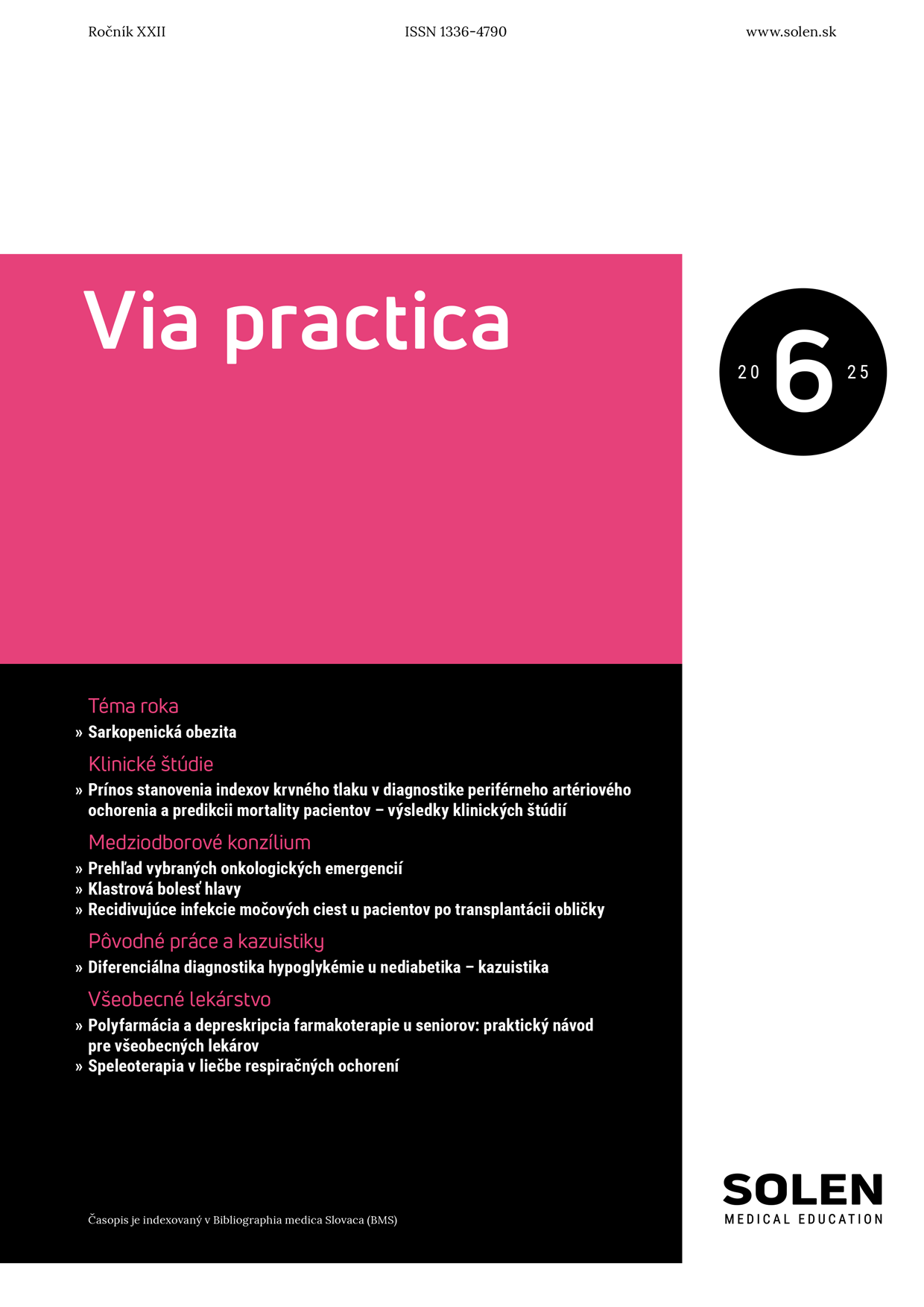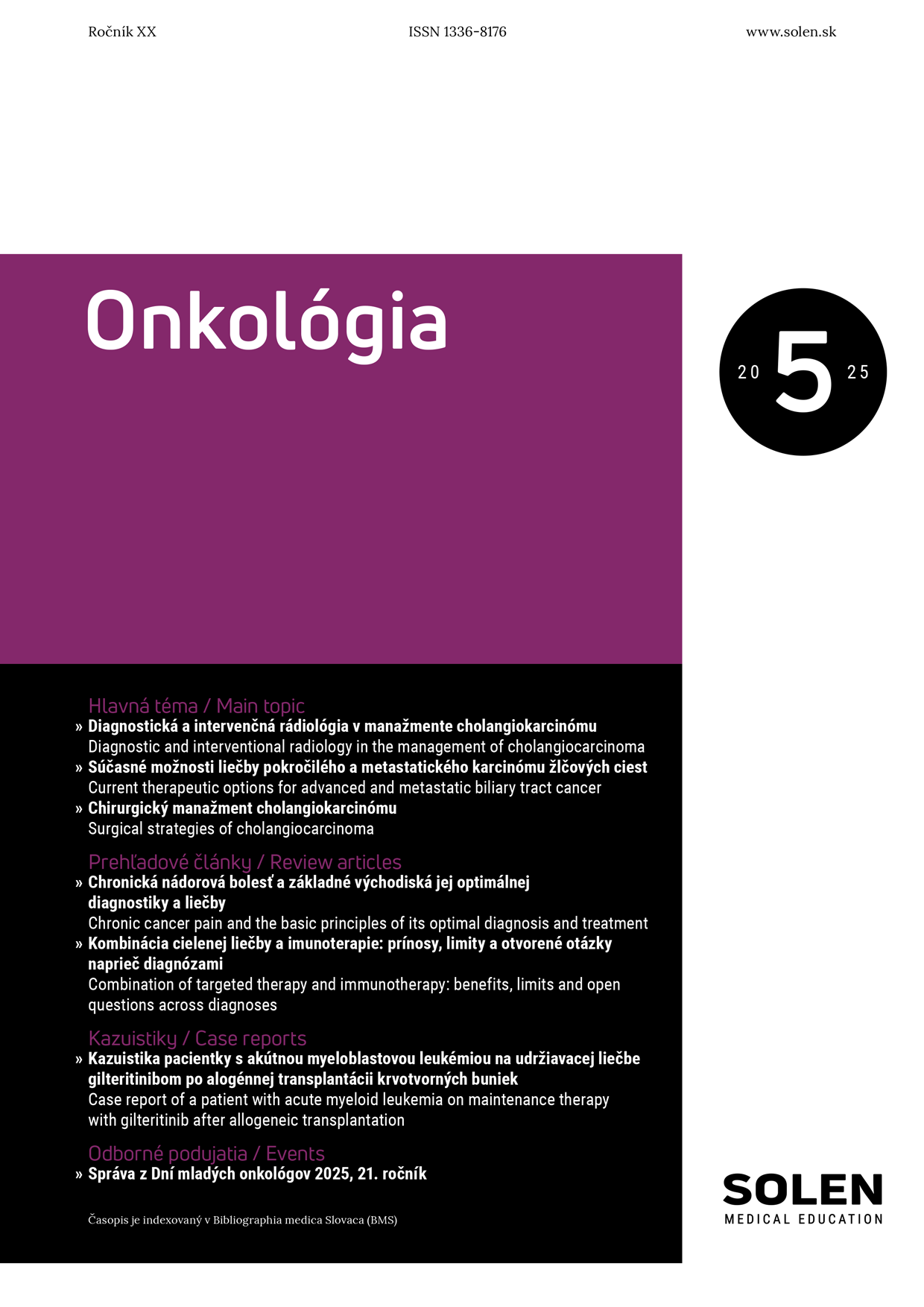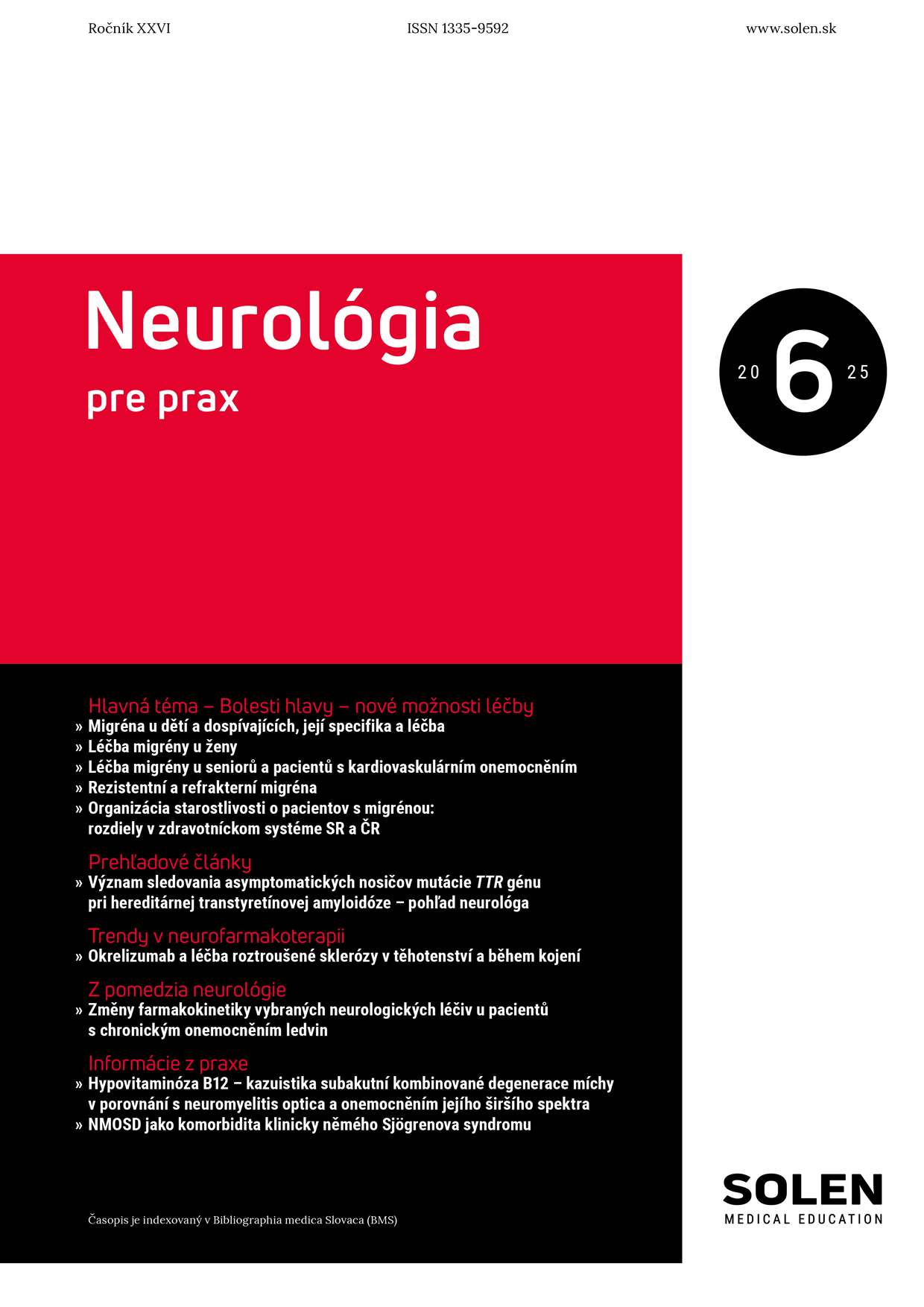Vaskulárna medicína 3/2016
Komplikácie diagnostiky sekundárnej aortoenterálnej fistuly a jej liečba
MUDr. Mária Rašiová, PhD., MUDr. Ľudmila Farkašová, PhD., MUDr. Ľubomír Špak, MPH, MUDr. Štefan Pataky, MUDr. Martin Koščo, MUDr. Marek Hudák, PhD., MUDr. Matej Moščovič
Sekundárna aortoenterálna fistula (SAF) je zriedkavá a často letálna príčina krvácania do gastrointestinálneho traktu. Vzniká po chirurgickej liečbe aneuryzmy abdominálnej aorty (AAA), alebo aortoiliackého okluzívneho postihnutia. Je však dokumentovaná aj po endovaskulárnej liečbe AAA. V diagnostike SAF je najsenzitívnejšie CT angiografické vyšetrenie aorty. Kauzálnou liečbou je otvorená chirurgická terapia so zrušením SAF, excíziou postihnutej časti, rekonštrukciou cievneho riečiska spolu s ošetrením priliehajúcej časti tráviaceho traktu. Keďže tento náročný chirurgický výkon sa často realizuje u polymorbídneho, septického a hemodynamicky nestabilného pacienta, je otvorená chirurgická liečba spojená s vysokou mortalitou. S menším bezprostredným rizikom pre pacienta je spojená endovaskulárna liečba, ktorá však neodstraňuje zdroj infekcie. V článku je prezentovaná kazuistika pacienta so SAF manifestujúcou sa po 22 rokoch od našitia aortobifemorálneho bypassu s klinickým obrazom recidivujúcich hemateméz, melén a akútnych trombotických uzáverov pravého ramienka aortobifemorálneho bypassu.
Kľúčové slová: aortoenterálna fistula, hemateméza, sekundárna aortoenterálna fistula
Complications of diagnostics of secondary aortoenteric fistula and its treatment
Secondary aortoenteric fistula (SAF) involves fistulization between the gastrointestinal tract and prior surgical reconstruction for either aneurysmal or occlusive disease. It seldom occurs after endovascular treatment of abdominal aortic aneurysm, too. SAF is rare and often lethal cause of gastrointestinal bleeding. The detection rate of CT angiography for SAF is the highest of all modalities. The treatment of choice is open surgery with graft excision, debridement of infected tissue, bowel repair followed by an extraanatomic bypass, or in situ placement of a new graft. Early postoperative mortality remains high, since surgery is done mostly in polymorbid, septic and hemodynamically unstable patients. Endovascular treatment is less risky, but does not eliminate the source of infection. We present a patient that underwent aortobifemoral bypass 22 years before developing SAF with recurrent hematemesis and acute thrombosis of the right part of aortobifemoral bypass.
Keywords: aortoenteric fistula, hematemesis, secondary aortoenteric fistula

















